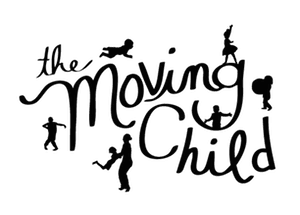The Power of Curiosity!
How does curiosity motivate movement
and shape the brain?
Curiosity is nature’s great motivator. When children are free to follow what interests them, they`re not only learning, they`re learning how to learn by developing a confident, Self-motivated, and dynamic approach to new ideas. -Gill Connell & Cheryl McCarthy
Nature has provided children with a great sense of innate curiosity to explore their world. Parents can also remember to ignite curiosity and bring positive chemicals into their own brains! The more a child is able to follow their curiosity by moving and engaging in play, the more their brain is stimulated, gaining in neuroplasticity and positive neurotransmitters. The body can also affect the brain by exploring new ways of moving in relationship to its surroundings.
As a child explores the movement potential of their body ignited by their own curiosity to interact with the world, they gain a sense of agency, a sense of “I can do this” and their embodied confidence grows. They also receive back extra sensory stimulation created by moving their body and engaging their senses. Moving to learn and learning to move is an ongoing interactive cycle, one that begins with and is continually supported by permission to follow one’s curiosity as a child.
Ways to support a child’s curiosity:
-Provide a safe space to move around in with soft toys and sensory tools for exploring.
-Offer simple permission: The more a child is able to explore their own movement the more authentic their movement will be.
-Name curiosity: “You are curious about this…”, “You are wondering how this works” “You are wondering where that goes”… supports your child to know its ok to be curious.
-Model staying curious (instead of judgmental) when challenging situations arise: this builds compassion.
-Be attentive to what captures your child’s curiosity and encourage them to follow it fully.
-Create gentle movement challenges to keep motivation up while also encouraging a child to explore on their own; pillow piles to crawl over, steps to navigate, bodies to crawl on.
-Redirect movements if they are not safe, to a more safe alternative, talking to your child about why you are helping them to redirect their movement.
-Observe how your child is learning about balance. How are they expressing rhythm in the way they move? How are both sides of their body engaging? If a parent is not seeing these aspects of healthy movement development, then it may be time to seek professional help.
Ways of being that stifle curiosity:
- Overly anxious parenting where children are not allowed much freedom in engaging their environment.
- Being told you are doing things “wrong” all the time.
- Too much authoritarianism or fear in a parent’s voice: shutting down a child’s natural interests.
- Having your body movements interrupted or told “no” to follow your curiosity all the time. Parents can get creative in designing their home or outdoor spaces. If they are constantly saying “no” to a child, as this can shut down that child’s motivation to move.
Limits to Curiosity?
A parent is always managing risk versus allowing a child to follow their natural curiosity and movement interests. Safety first. This can be difficult sometimes to assess; however, most parents can trust their gut. It is important to remember however that an over-avoidance of risk may be a risk in and of itself. This risk may not be as evident as an injury, but in the long term it can have consequences. A child is curious by nature and their body is designed to feel motivated by that curiosity.
Curiosity is a natural instinct necessary to develop and conquer new movement tasks. A healthy curiosity motivates a child to grow confident in their own movement ability. There are some amazing videos online of toddlers managing to move safely in very difficult natural environments, and a lot of micro-moment practice and movement learning has gone into that kind of ability. One way to manage this risk is to allow your infant to take on new risks but with a soft mat or other spongy surface beneath them in case of falling or tumbling, or just keeping your hands available. You can see some beautiful modeling of safe movement challenges that parents can engage with their child in The Moving Child Film I: Supporting Early Development Through Movement

